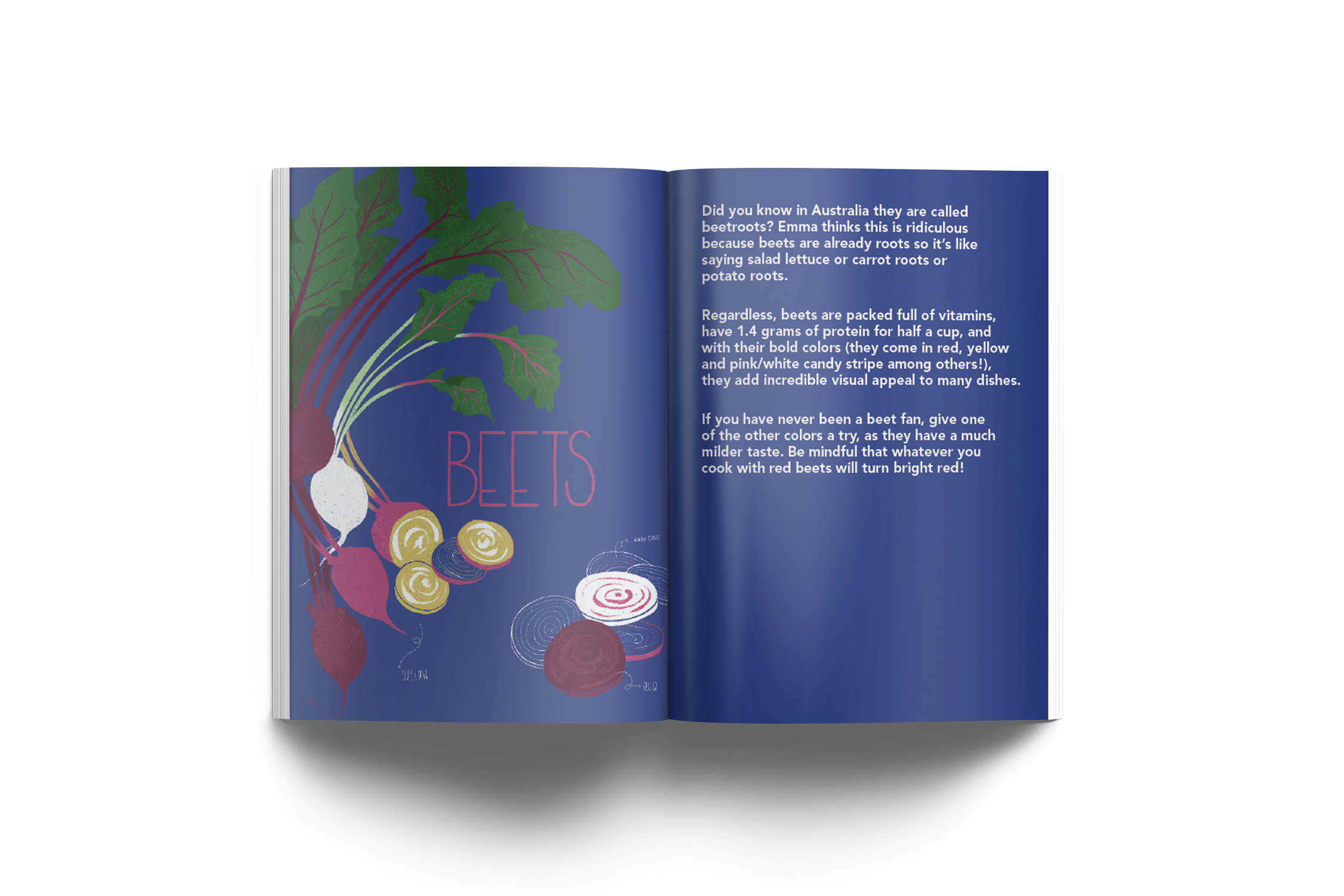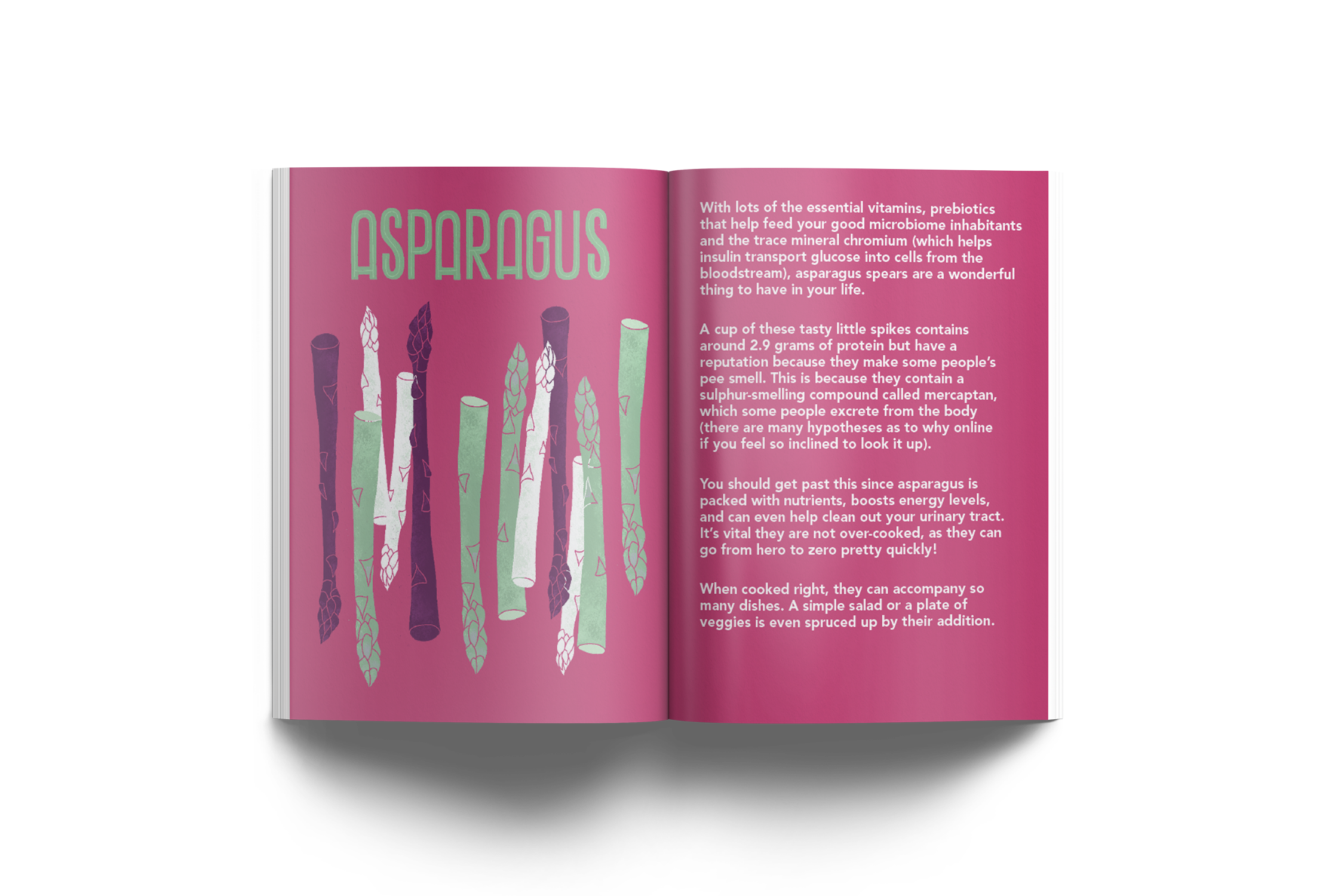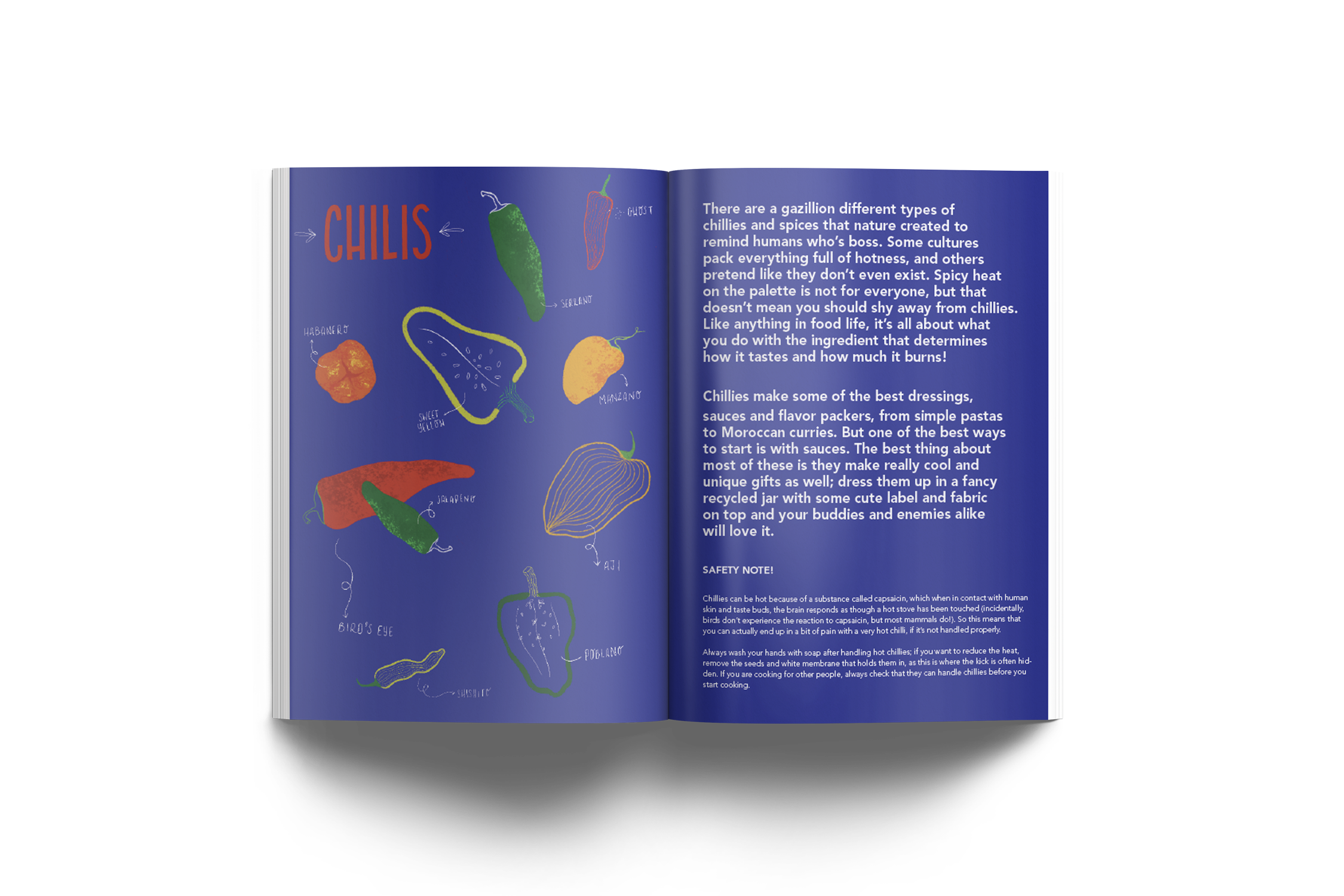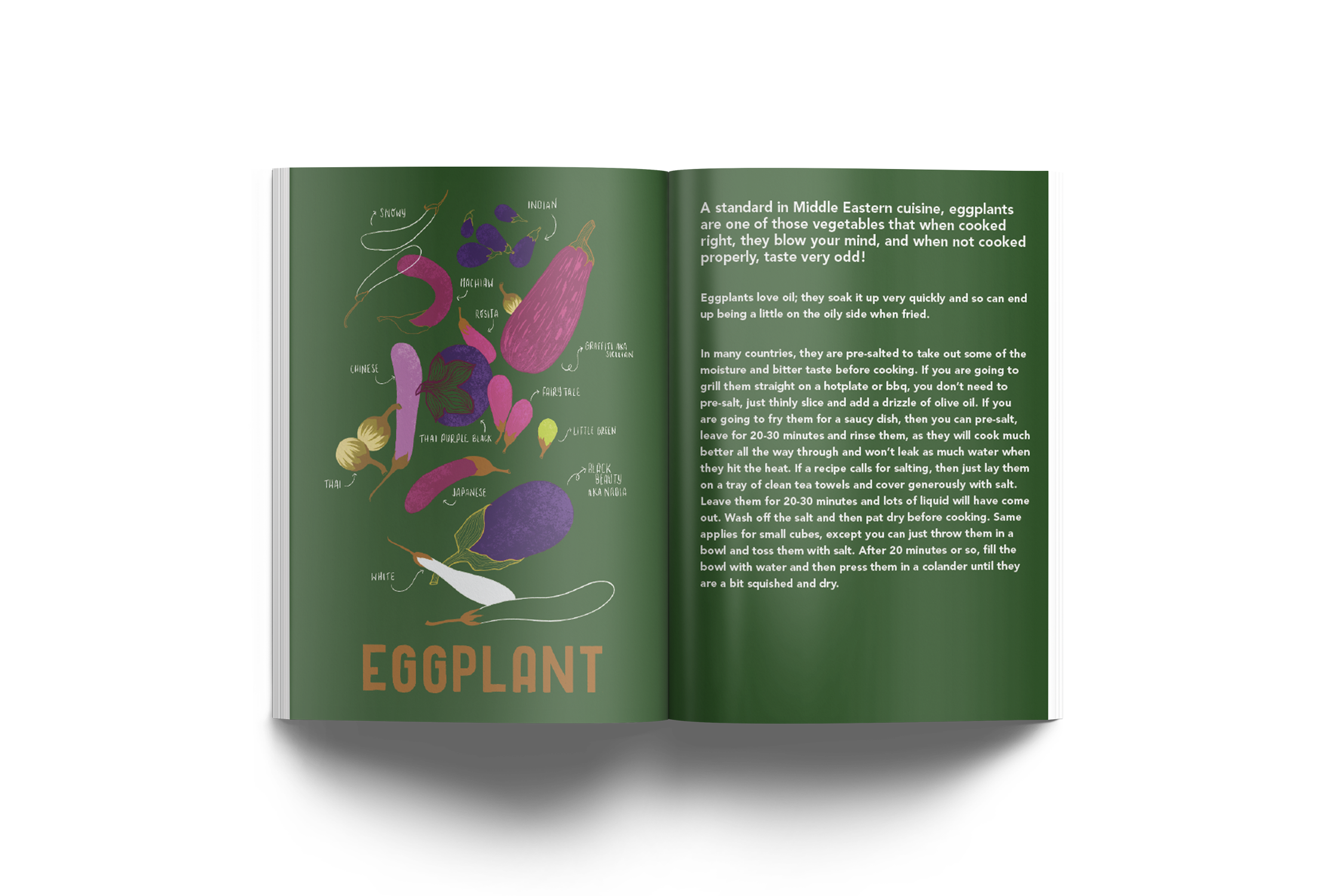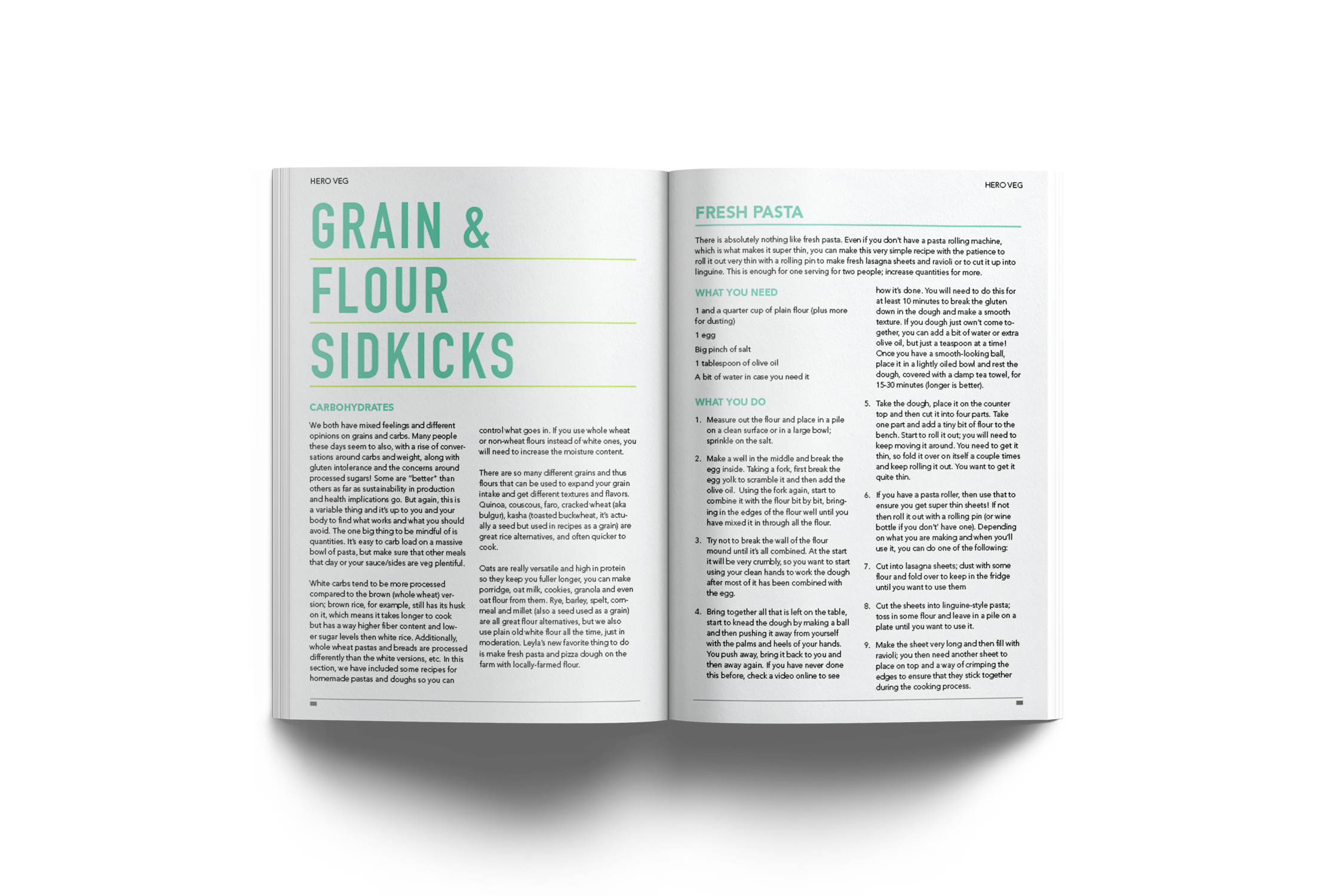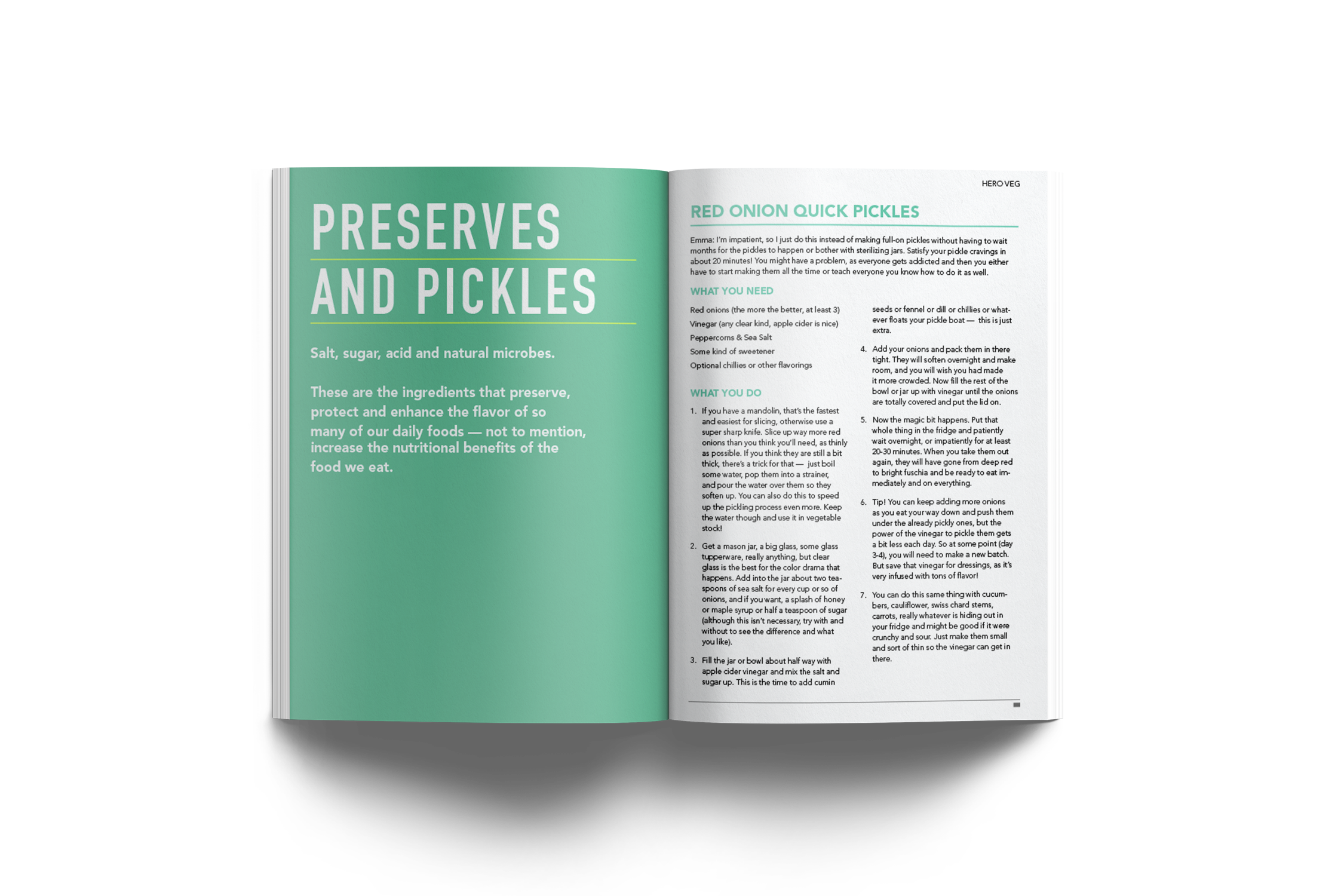By Leyla Acaroglu
🥁 Drum Roll Please 🥁
Emma Segal and I are excited to announce the launch of our NEW cookbook collaboration where we set about creating a celebration of the hidden heroes in our lives: vegetables. Yep, delicious, nutrient-packed, immune-system-building vegetables!
After years of cooking, eating and experimenting, we are so happy to share The Hero Veg Cookbook with the world! It’s designed to illuminate the secret, often-overlooked powers of plants (for our bodies AND for our planet’s health). Through our fun-to-read, easy-to-follow plant-based cookbook, you can also activate your curiosity and problem-loving superpowers by leveraging the art of experimentation through intuitive cooking (but don’t worry — the recipes ARE written in a standard format!).
We have been working together for several years through the UnSchool, Disrupt Design and the CO Project Farm, where we have made thousands of vegetable-centric meals, in all sorts of locations, challenging conditions and crazy scenarios so that we could feed our fellowship and workshop participants nutritious, delicious, brain-building plant-based food. Independently, we are both fascinated by vegetarian cooking, and we are always seeking out new ways of transforming vegetables into unique and delicious meals. After 2 years of hard work, we have finally assembled over 160 recipes in a 250+ page illustrated cookbook that is now here and ready to share with the world, right at a time when more and more people are embracing the benefits of a more sustainable lifestyle and looking for ways to boost immune strength.
About the Hero Veg CookBook
It’s hand illustrated by Emma and filled with recipes from our childhoods and current cooking adventures, along with things Leyla has learnt on the CO Project Farm and collaborations from the kitchen.
To complement the heroes, we have many sidekick recipes and fascinating facts about each of the 30 vegetables we included as heroes in the book — not to mention many pages of fascinating information on the health and sustainability benefits of eating more veg!
Through the years of running UnSchool programs and now hosting hundreds of people on the CO Project Farm through our community open days and sustainability workshops, we have explored and refined a series of hero vegetable recipes that are easy to make nearly anywhere, often with just a few ingredients. We have mastered the art of creating elaborate, beautiful, colorful, flexible and adaptable plant-based meals that can feed and satisfy you, your family, and even groups of around 25 people or more (as that’s how many people we end up with on our fellowships). These recipes were tried and tested in many cases on people who have not had a lot of vegetarian (or not very good vegetarian!) meals in their life and have received rave reviews, so if you’re looking to add more plants to your plate or help others whose taste buds need convincing, then this is the cookbook for you.
To get a taste (pun definitely intended) of what this cookbook’s pages hold, we’re sharing here some excerpts that will leave your mouth watering and your mind hungry for plant-based change (food puns are just way too easy!). We can’t wait to see what you’re cooking and how you adapt these recipes to make them your own, so be sure to tag us at @COProjectFarm with your yummy food pix!
A Vegetable-Centric Food Philosophy
Nearly all plants are still alive when taken from their parents... a bit creepy, but also an incredible part of the cycle of life. Eat fresh living things and all the colors of the rainbow that have been grown in ways that increase the nutrients that each mouthful can bring you.
Our cooking philosophy is based on what we call “intuitive cooking” — like driving a car, after a while you have done it enough times to be confident to do it without the stress and concerns you felt the first few times you took to the wheel. Each section of this book has been laid out to walk you through the process of learning how to turn vegetables into delicious and healthy dishes that will impress you and your friends. We also wanted to bust some myths, share zero waste cooking ti[s and help you find the right mix of healthy vegetables based dishes for your life and location. We are not fans of exact measurements, but we have included indications and suggestions. We always encourage you to explore and experiment with them and see what works for you.
There are somewhere around 20,000 edible vegetables and plants in the world, and yet we only eat around 10% of those. Exploring the world of edible plants is an adventure that you could and should spend your whole life doing, but to help you get started, we have laid this book out in alphabetical order, across the 30 easiest to find vegetables around the world. They are the heroes of recipes from Thailand to Italy, and we take great pride in sharing this selection of easy-to-make and delicious-to-eat plant heroes that are staples in our kitchens! As we have co-written this book, we have also learned new recipes and techniques off each other, adapting our styles to work together when we get the chance to cook for people, and also finding the other person's tips to be very useful in our own stock of standard recipes. That's the beauty of cooking — you always learn how to make things taste better every time you take on the challenge to prepare a meal!
How To Use The Cookbook
This is a cookbook that doesn’t really tell you how to cook; it’s more about sharing general guidelines to support you on a DIY adventure through the wonderful world of vegetables and is designed to invite you to develop the cooking confidence and creativity to make vegetables the heroes of your plate. Everyone has their own tastes, preferences, access to certain ingredients and time to spend putting stuff together. So instead of giving traditional very measured out recipes, this cookbook uses approximations from our own experiences and operates like a creative template. You will find that we have included ingredients and rough measurements based on what we would do whilst cooking that recipe, as our goal is to encourage you to adapt and expand based on your situation, which can spin off recipes into a new direction. There are some basic principles of cooking veg that are really important, and we have included all these insights. Once you master the basics, then you are set to get them shining in their full hero glory.
We believe that cooking is about developing intuition and your own processes over time. Everyone is different, so the level of salt, spice and other flavorings will change based on your preferences and the availability of ingredients. That's why we provide amounts and ingredients as a guide and you can adjust as needed.
This may stress some of you out, but please give it a try! We have added some descriptions of the basics in this cookbook so you can master them and move onto your own variations and creative interpretations. Over time, the more we learn anything, the more freedom we have to get experimental. Our goal is to inspire you to become an intuitive vegetable cook, so when you look in your fridge and see a couple of single veggies, you can come up with a creative outcome to bring them to life. We often play the game of how many delicious things we can make out of whatever is left in the fridge, making it up as we go.
The best way to use this book is to have a read, and then when you are hungry, need to cook for friends, want to experiment or just need some inspiration then find the veg you have most readily available to you, land on a recipe and get cooking!
20 Sidekick Pantry Staples
In the book, we not only offer up recipes for the veg heroes of our lives, but also for the sidekicks that truly make them sing! Think: sauces, dressings, preserves, grain-based sidekicks like pizza dough (yup), nut cheeses, dips, and more! Here’s a sample of some of the sidekicks that we consider essential:
Olive oil is great in a more Mediterranean region, or if you are in a tropical region where coconuts are abundant, then local coconut oil is great. Similarly, if you are in a region with another local and abundant oil, use that. Local is always best!
Salt makes the flavor of everything come out. Different kinds of salt are great to have around and experiment with — some are saltier than others, some have a more mineral taste, some are great for dramatic sprinkles on top and others are best for cooking as they dissolve more easily.
Black pepper to grind fresh (using a mortar and pestle if you have one is also a great stress reliever!).
Sweetener such as cane sugar, coconut sugar, palm sugar, maple sugar, agave, stevia — again whatever is closest to your region is best, otherwise try for something that hasn’t been super refined.
Honey, as local as possible to support local apiaries and plants, and is also then a natural way for your body to develop antibodies to local pollens. Some cities now also have programs to build hives in gardens and rooftops to help build habitat for these critically important pollinators — without bees, we wouldn't have any food!
Flours of different kids are good, like wheat, oat, almond meal or rice flours, depending on where in the world you are.
Nuts of whatever kind you can find and afford. Some nuts are really expensive, but all nuts are extremely versatile so in most cases, you can sub for what you can find and what is most plentiful in your area.
Seeds like sunflower, sesame and pumpkin seeds
Onions, red, yellow, green, leeks, small and big
Garlic — different kinds, and try to get the non-extra-white one, as it's most likely bleached! There’s a world of garlics out there. Russian red is a favorite, elephant garlic is impressively gargantuan, and a very fun rainy day activity is roasting up a series of different ones, putting them next to a bowl of golden silky olive oil and some toasted bread, and having a garlic taste test.
Lemons, limes and citrus of all types to brighten up your dishes
Vinegars like apple cider, balsamic and red wine vinegar
Soy sauce or Tamari, either soy or mushroom-based
Coconut milk and/or coconut flakes: you can often find this in tin cans, bricks or powders, and it is good to have on hand.
Fresh ginger root; not only is it soooo tasty, it's very good for you too!
Some kind of legume like lentils or chickpeas are great to have on hand, either dry or in cans, as they can be a very quick base for all sorts of other vegetables.
Grains and pseudograins (things that look like grains but are not actually in the grain family) like kasha, quinoa, different kinds of rice (red, black, brown, wild, jasmine etc) to make filling bases or to add to soups
Plain flour, or specialty ones such as rice of chickpea for gluten-free — you can use this to make many yummy things, from fresh pasta to pizza and cakes.
Dried fruits such as apricots, raisins and figs; these are great for healthy snacking, popping in cakes and cookies along with making granola for a protein-packed breakfast.
Dried herbs and spices, like nuts, differ in price and variety depending on your location. We curated a list below to get you started, but spices really are the magic sidekicks for making anything shine!
And here’s a recipe for the road (it’s also one of the kid-friendly ones, as we encourage collaborative cooking in the book with the whole family!):



